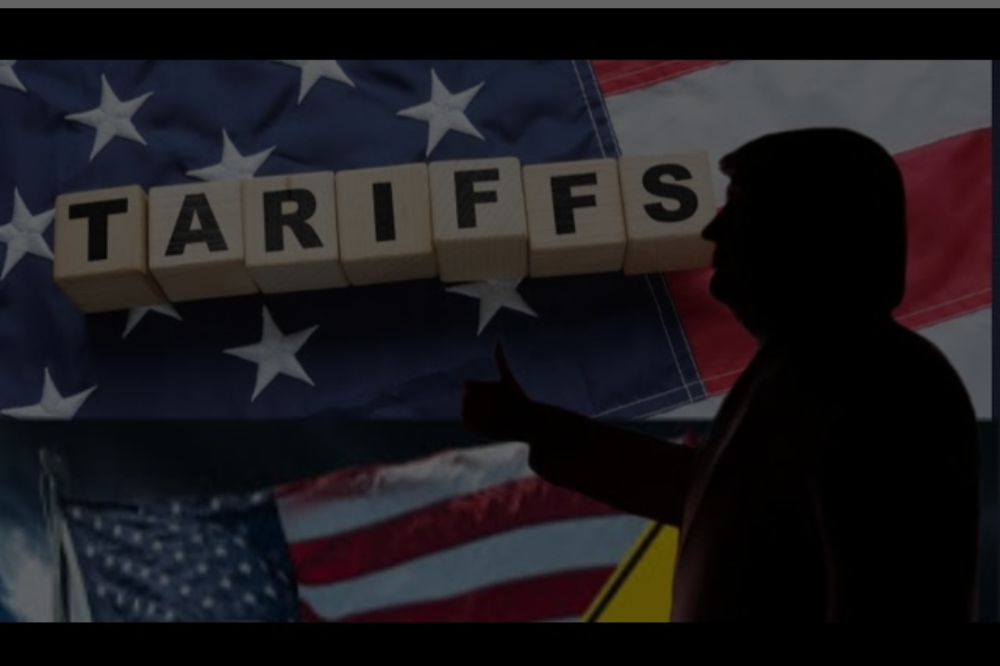Donald Trump’s return to the White House has unleashed one of the most aggressive trade policy shifts in modern American history. His sweeping tariffs on over 90 countries have fundamentally altered global commerce, creating ripple effects that extend far beyond Washington’s initial intentions.
The numbers tell a striking story. America’s average tariff rate has skyrocketed from 2.4% in 2024 to 18.6% as of August 2025—the highest level since 1933. These aren’t modest policy adjustments; they represent a dramatic restructuring of how America engages with the world economy.
But tariffs are complex economic instruments that rarely deliver their promised outcomes in straightforward ways. While Trump positions these measures as tools to strengthen American manufacturing and reduce trade deficits, the early results reveal a more complicated reality filled with unintended consequences and surprising winners and losers.
Understanding what’s actually happening requires looking beyond political rhetoric to examine hard data on government revenues, trade flows, consumer prices, and global market adaptations.
Government Coffers Are Overflowing
The most immediate and measurable impact of Trump’s tariff strategy has been a massive boost to federal revenues. Monthly tariff collections have tripled, jumping from modest figures in 2024 to $28 billion in June 2025 alone.
The Congressional Budget Office projects these tariff increases could reduce government borrowing by $2.5 trillion over the next decade. That’s real money that helps fund government operations without raising income taxes or cutting spending programs.
However, this windfall comes with important caveats. The same CBO analysis warns that tariffs will shrink overall economic growth, potentially offsetting some of the fiscal benefits.
More significantly, the Trump administration’s concurrent tax cuts are projected to reduce revenues by more than the tariffs generate, meaning the net fiscal impact remains negative.
The revenue surge also reflects a fundamental misunderstanding about who actually pays tariffs. Despite political claims that foreign countries bear these costs, tariffs are ultimately paid by American companies importing goods.
These businesses must decide whether to absorb the additional costs or pass them along to consumers through higher prices.
The Trade Deficit Paradox
One of Trump’s primary justifications for imposing tariffs was reducing America’s trade deficit—the gap between what the country imports versus what it exports.
The theory seemed logical: make imports more expensive, and Americans will buy fewer foreign goods while other countries purchase more American products to avoid retaliatory measures.
Reality has proven far more complicated. The trade deficit has actually widened since the tariffs took effect, reaching a record $162 billion in March 2025 before settling back to $86 billion by June.
This counterintuitive result stems largely from American businesses rushing to stockpile goods before tariff implementation.
Companies imported massive quantities of everything from electronics to raw materials, creating an artificial surge in import volumes that overwhelmed any reduction in regular trade flows.
The stockpiling effect will eventually fade, but economists remain skeptical that tariffs can meaningfully reduce the overall trade deficit.
They argue that America’s trade imbalance reflects deeper structural issues—the country consistently spends more than it produces, requiring foreign goods to fill the gap.
Changing those fundamentals requires addressing domestic savings rates, fiscal policies, and consumption patterns rather than simply making imports more expensive.
China Adapts and Redirects
China has faced some of the harshest tariff treatment, with rates reaching 145% at their peak before settling at 30%. The impact on bilateral trade has been substantial: Chinese exports to America dropped 11% in the first half of 2025 compared to the previous year.
But China hasn’t simply accepted reduced global trade. Instead, Chinese companies have aggressively pursued alternative markets.
Exports to India jumped 14%, while trade with the European Union and United Kingdom increased 7% and 8% respectively. Perhaps most significantly, Chinese exports to ASEAN nations—including Vietnam, Thailand, and Malaysia—grew 13%.
This ASEAN surge raises important questions about tariff effectiveness. Trade experts worry about “tariff jumping,” where Chinese companies establish operations in neighboring countries to process goods before shipping them to America. This allows them to avoid China-specific tariffs while maintaining access to US markets.
The phenomenon isn’t theoretical. During Trump’s first presidency, Chinese solar panel manufacturers successfully used similar strategies to circumvent trade barriers.
The current increase in China-ASEAN trade volumes suggests this playbook is being deployed again, potentially undermining the tariffs’ intended effects.
Global Trade Reshuffling
Rather than retreating into protectionism, many countries have responded to America’s trade war by deepening relationships with each other.
The UK and India finalized a trade agreement they had been negotiating for three years. Norway, Iceland, Switzerland, and Liechtenstein concluded new deals with Latin American partners. The EU is advancing trade negotiations with Indonesia.
These developments reflect a broader shift in global commerce. Countries are hedging against American trade unpredictability by diversifying their economic partnerships and reducing dependence on US markets.
Agricultural markets provide a clear example of this reshuffling. China traditionally imported significant quantities of soybeans from American farmers to feed its massive pig population.
But trade tensions have accelerated a shift toward Brazilian suppliers. In June 2025, China imported 10.6 million tons of soybeans from Brazil compared to just 1.6 million tons from the United States.
This shift has lasting implications beyond current trade disputes. Once supply chains reorganize around non-American suppliers, rebuilding those commercial relationships becomes extremely difficult and expensive. American farmers may find themselves permanently displaced from markets they previously dominated.
Consumer Prices Start Climbing
The ultimate test of tariff policy lies in its impact on American consumers. Economic theory clearly predicts that import taxes will eventually translate into higher retail prices, but the timing and magnitude depend on various factors including stockpiling, competition, and supply chain flexibility.
Initial months saw relatively modest price impacts as retailers used stockpiled inventory to maintain margins. However, June 2025 data revealed the first clear signals that tariffs are feeding through to consumer prices.
Specific imported goods showed marked price increases: major appliances, computers, sports equipment, books, and toys all became noticeably more expensive.
Harvard University researchers tracking real-time pricing data from major retailers found that imported goods and domestic products in tariff-affected categories are rising faster than unaffected domestic goods.
The overall inflation rate remains relatively contained at 2.7%, but economists warn this could change as stockpiles diminish and businesses exhaust their ability to absorb tariff costs. History suggests that sustained tariff policies eventually translate into sustained price pressures for consumers.
The Unintended Consequences Keep Coming
Tariffs create complex economic incentives that often produce results far removed from their original intentions. American companies are rethinking global supply chains, potentially moving operations to avoid tariff exposure.
Foreign governments are implementing retaliatory measures that harm American exporters. Currency markets are adjusting to reflect new trade patterns.
Perhaps most significantly, the global economy is adapting to function around American trade barriers rather than through them.
Every month these policies remain in place makes it more likely that alternative trade relationships will become permanent fixtures of the global economy.
The soybean market illustrates this dynamic perfectly. Brazilian farmers are expanding production capacity to meet Chinese demand that previously went to American suppliers.
Chinese importers are signing long-term contracts with non-American suppliers. Once this infrastructure is in place, reversing it becomes extremely costly even if trade disputes eventually resolve.
What the Data Really Shows!
Six months into Trump’s latest trade war, the evidence reveals a policy producing significant unintended consequences while struggling to achieve its stated objectives.
Government revenues have increased substantially, but at the cost of economic efficiency and consumer welfare. The trade deficit has widened rather than narrowed. China has successfully redirected trade flows toward other partners.
Most concerning from a long-term perspective, America’s aggressive use of tariffs is accelerating efforts by other countries to reduce their dependence on US markets and supply chains.
Every trade deal signed between non-American partners, every supply chain reorganized to avoid US tariffs, and every alternative relationship established makes the global economy less centered on American commerce.
The full impact of these policies will unfold over months and years as stockpiles diminish, supply chains adapt, and price pressures build.
But the early evidence suggests that tariffs are a much blunter and less effective instrument than their proponents claimed—one that often hits American consumers and businesses harder than intended foreign targets.
Understanding these realities becomes crucial as policymakers decide whether to escalate, maintain, or modify current trade policies. The data shows that trade wars are far easier to start than to win!

